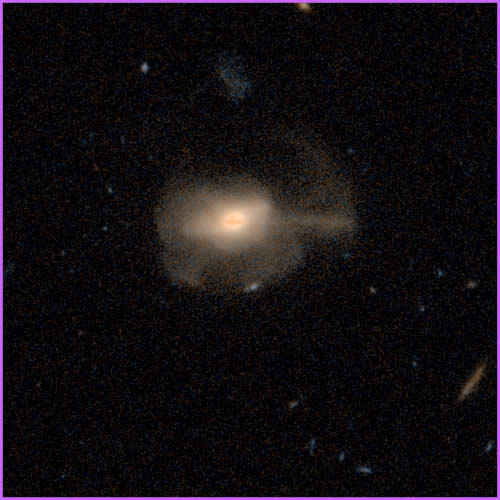 |
 |
After the Collision: A Late Stage Galaxy Merger This tattered and asymmetrical galaxy is the result of a violent collision between two galaxies. These events, called "mergers', occur when two nearby galaxies are pulled together by their mutual gravitational attraction. When the two galaxies are about the same size, the merger is completely disruptive. These mergers rip apart the detailed structure of spiral galaxies, scramble the orderly circular orbits of their stars, and leave a fluffy, chaotic ball of stars that orbit in all directions. During the collision, any gas in the galaxies gets driven toward the center and compressed, resulting in a burst of star formation. During and after this starburst, some theories predict that the remaining gas falls onto the massive black hole at the center of the galaxy, powering a quasar. According to these theories, the energy from the quasar heats any leftover gas to high temperatures and pushes it out of the galaxy center into a hot halo outside the galaxy. In this state, the gas cannot form stars so the resulting galaxy merger remnant is devoid of star formation. The merger remnant we see here still has obvious streamers of stars which trace out the path of the shredded galaxies as they spiralled in toward one another. In a billion years or so, the stars in these streamers will have faded and their orbits will have been somewhat spread out, resulting in a smooth distribution of stars that looks like an elliptical galaxy. In fact, these powerful mergers between equal size galaxies are the current best theory for how elliptical galaxies form. This is corroborated by the fact that very deep images of nearby normal elliptical galaxies taken with the Hubble Space Telescope reveal faint streamers that are invisible in shorter exposures. It is likely that normal elliptical galaxies, such as the one shown in a previous gallery image, once looked like the chaotic, asymmetrical merger remnant we see here. |